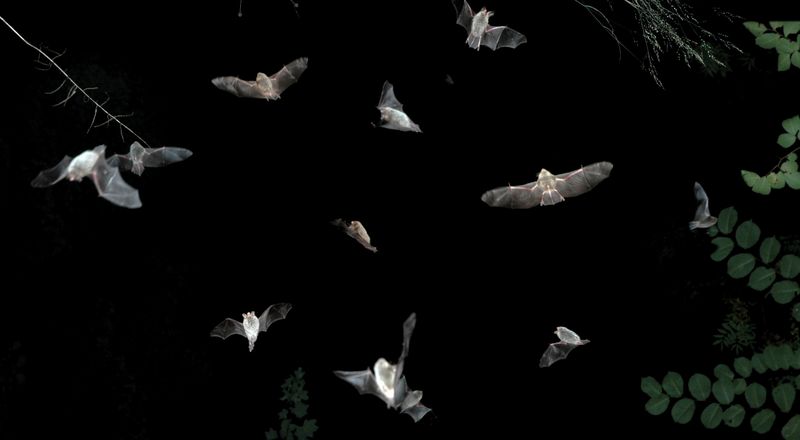Bats employ a variety of social calls for communication purposes. However, for most species, social calls are far less studied than echolocation calls and their specific function often remains unclear. We investigated the function of in-flight social calls during autumn swarming in front of a large hibernaculum in Northern Germany, whose main inhabitants are two species of Myotis bats, Natterer’s bats (Myotis nattereri) and Daubenton’s bats (Myotis daubentonii). We recorded social calls in nights of high swarming activity and grouped the calls based on their spectro-temporal structure into ten types and verified our visual classification by a discriminant function analysis. Whenever possible, we subsequently assigned social calls to either M. daubentonii or M. nattereri by analyzing the echolocation calls surrounding them. As many bats echolocate at the same time during swarming, we did not analyze single echolocation calls but the “soundscape” surrounding each social call instead, encompassing not only spectral parameters but also the timbre (vocal “color”) of echolocation calls. Both species employ comparatively similar social call types in a swarming context, even though there are subtle differences in call parameters between species. To additionally gain information about the general function of social calls produced in a swarming context, we performed playback experiments with free-flying bats in the vicinity of the roost, using three different call types from both species, respectively. In three out of six treatments, bat activity (approximated as echolocation call rate) increased during and after stimulus presentation, indicating that bats inspected or approached the playback site. Using a camera trap, we were sometimes able to identify the species of approaching bats. Based on the photos taken during playbacks, we assume one call type to support interspecific communication while another call type works for intraspecific group cohesion.
[original abstract]

Original study:
Bergmann, A., Gloza-Rausch, F., Wimmer, B., Kugelschafter, K., & Knörnschild, M. (2022). Similarities in social calls during autumn swarming may facilitate interspecific communication between Myotis bat species. Frontiers in Ecology and Evolution, 10. https://doi.org/10.3389/fevo.2022.950951
